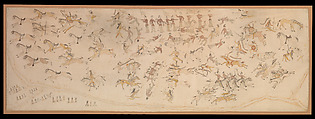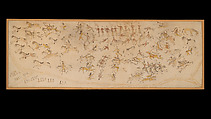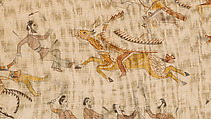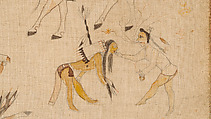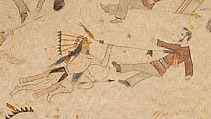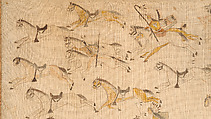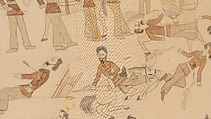The Battle of the Little Bighorn
Standing Bear/ Mató Nájin Minneconjou Lakota/Teton Sioux
Not on view
Standing Bear was a respected Lakota artist and leader at Pine Ridge Reservation, South Dakota, who fought in the 1876 Battle of the Little Bighorn as a young man. He later traveled in Europe with Buffalo Bill Cody’s Wild West Show, the performative climax of which was that infamous battle. In this rare pictorial muslin, suggestive of Plains ledger drawings, the artist vividly depicts his memories of the conflict in eastern Montana territory between Native peoples of the Great Plains and the Seventh Calvary of the United States Army led by Lieutenant Colonel George Armstrong Custer. An alliance of Hinono’eiteen (Arapaho), Tsitsistas/Suhtai (Cheyenne), and Lakota (Sioux) forces was victorious in the battle, and Custer died fighting. Standing Bear evokes the scale and intensity of the struggle by filling his canvas with the dead and dying on both sides, individualizing figures through physiognomy and other details of clothing and weaponry.
Due to rights restrictions, this image cannot be enlarged, viewed at full screen, or downloaded.
This artwork is meant to be viewed from right to left. Scroll left to view more.
